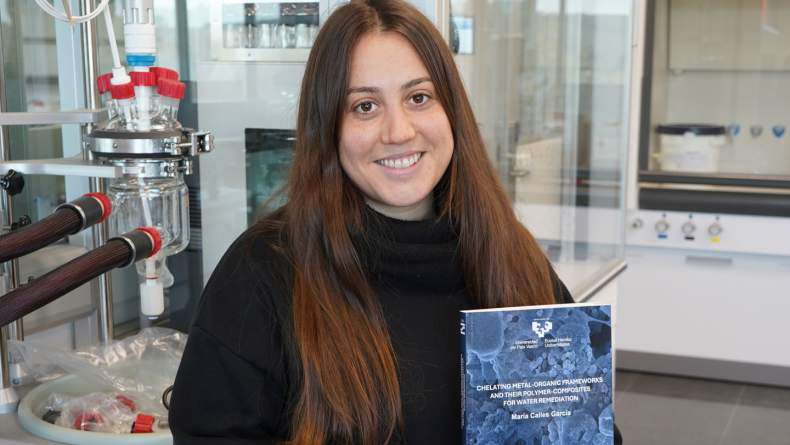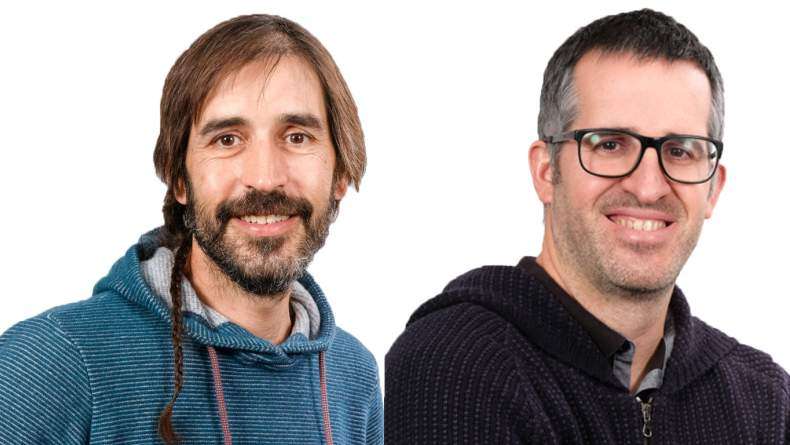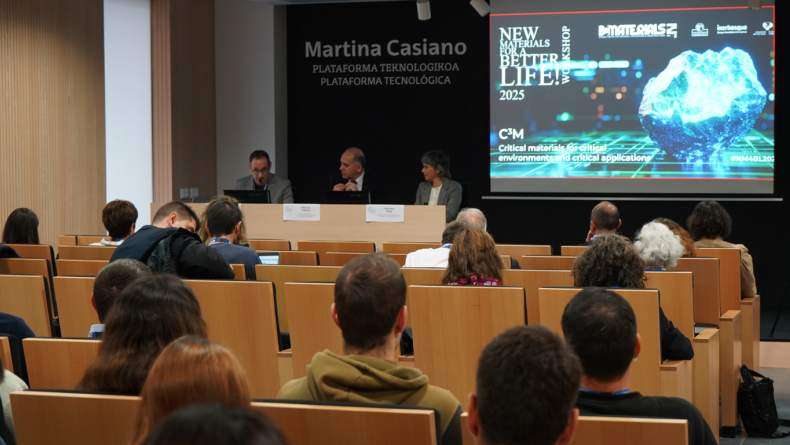BCMaterials Fortnightly Seminars #36

ANDRÉS MARTÍN
(BCMaterials)
INFLUENCE OF ND CONTENT AND OF NB AND CU ON GRAIN BOUNDARY INFILTRATION IN ND-LEAN ND-FE-B PERMANENT MAGNETS
The current high-energy permanent magnets commercially available use considerably large amounts of critical raw materials, such as Dy and Nd, to obtain high values of coercivity and increase their thermal stability. Considering the above we have focused on the development of high coercivity rare-earth-lean and Dy-free Nd-Fe-B permanent magnets by grain boundary engineering. We have studied the influence of Nd content and of Nb and Cu on both the crystallization and infiltration processes and on their microstructure and magnetic properties. The experiments were carried out on melt-spun amorphous ribbons of Nd10Fe84B6, Nd11Fe83B6, Nd12Fe81B6Nb1 and Nd13Fe81B6 for the Nd content influence and of Nd10Fe84B6, Nd9Fe84B6Nb1 and Nd9Fe84B6Nb0.5Cu0.5 for the Nb and Cu influence. The techniques employed in this study include X-ray diffraction and electron microscopy for the microstructure and composition analysis and vibration sample magnetometer with fields up to 14 T for the magnetic properties analysis.JAGOBA MARTÍN
(BCMaterials)
SEQUENTIAL SINGLE–CRYSTAL–TO–SINGLE–CRYSTAL TRANSFORMATIONS IN A 3D POROUS HYBRID CONTAINING THE UNCOMMON PARATUNGSTATE A [W7O24]6– FRAGMENT AND CU(II)-TETRAAZACOMPLEXES
As one of the scarce examples of a coordination polymer based on a paratungstate A or heptatungstate fragment, the novel compound [{Cu(cyclam)}6(W7O24)2]·31 H2O (1) (cyclam= 1,4,8,11–tetraazacyclotetradecane) has been synthetized and characterized. This porous structure changes its dimensionality from an initial 3D assembly to a layered arrangement [{Cu(cyclam)}6(W7O24)2]·24 H2O (2) due to the rotation of alternate layers and consequent migration of a Cu atom to an adjacent WO6 octahedra as a result of a thermally triggered single–crystal–to–single–crystal transformation upon partial dehydration. Total dehydration leads to the anhydrous [{Cu(cyclam)}6(W7O24)2] (3) which undergoes further structural changes associated to the simultaneous migration of Cu atoms and cluster rearrangement. While 1 and 2 show a single crystallographic type of channels, the rearrangement of copper atoms in 3 resulted in a crystal packing with two types of channels with slightly different sizes. All transformations are fully reversible at ambient conditions and occur in one day approximately. To our knowledge, 1 is the first {W7}-based polyoxometalate that exhibits adsorption features as demonstrated by preliminar N2 gas sorption experiments owing to its permanent porosity.Related news
María Calles, New Doctor of BCMaterials
We would like to congratulate María Calles García for obtaining her PhDs in Materials Science and Technology from the UPV/EHU. On December 4 made a brilliant defense of her thesis titled ‘Chelating…Invited Talk with Barcelona Microelectronics Institute’s researchers (December 3)
On December 3 at 12:00 PM, in the Martina Casiano Auditorium in Leioa, BCMaterials will host senior researchers Antón Guimerà and Xavier Illa from the Barcelona Microelectronics Institute (IMB-CNM,…Invited Talk by Liu Yao on Lithium-Metal Batteries (December 2)
Next Monday, December 2, Liu Yao, professor at the Shanghai Institute of Applied Physics, will give an invited lecture at BCMaterials entitled ‘Li-Metal Batteries: From Liquid to Solid-State’. The…Success of BCMaterials’ Annual Workshop on Critical Materials
The 2025 edition of BCMaterials’ annual workshop gathered nearly one hundred participants on November 19 in Leioa to review the latest advances and discuss critical materials, their applications, and…



